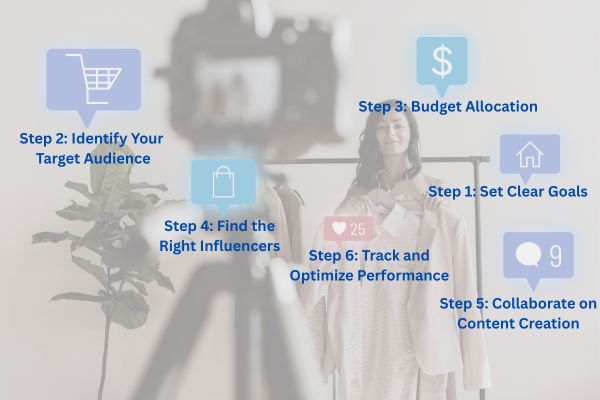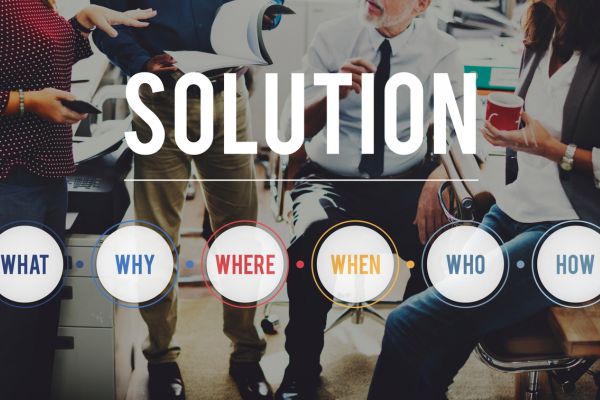Influencer marketing has become one of the most effective ways for brands to connect with audiences, build trust, and drive conversions. With 90% of marketers agreeing that influencer collaborations deliver better ROI than traditional ads (Mediakix), it’s no surprise that businesses of all sizes are leveraging this strategy to amplify their reach.
As audiences grow more selective about the content they trust, influencers provide a direct and relatable way for brands to connect with their target markets. It’s a strategy built around reach and authenticity, key factors you’ll explore in the sections below.
This influencer marketing guide will walk you through proven strategies, types of influencers, and actionable tips to run successful campaigns, whether you’re a startup or an established brand.

What Is Influencer Marketing and Why It Works
Influencer marketing is a form of collaboration where brands partner with individuals who have a dedicated and engaged following on social media or other digital platforms. These individuals – called influencers – create content that promotes a brand’s products or services in a way that feels personal and authentic to their audience. Instead of direct advertising, this approach leverages trusted relationships between influencers and their followers to shape buying decisions.
Influencers are typically categorized by the size of their following, each offering unique advantages:
- Mega-influencers (1M+ followers): Often celebrities or internet personalities with a broad reach and high visibility. Best for mass awareness campaigns.
- Macro-influencers (100K–1M followers): Professional content creators with large, engaged audiences. Ideal for reaching niche markets at scale.
- Micro-influencers (10K–100K followers): Known for stronger personal connections with their followers. They tend to have higher engagement rates and are well-suited for targeted campaigns.
- Nano-influencers (1K–10K followers): Small but loyal audiences. Great for hyper-local or community-based marketing with highly personal influence.
Strategic partnerships, not follower counts, are what drive results. Choosing influencers who align with your values and audience will always outperform vanity metrics.
Why influencer marketing works for brands?
Influencer marketing isn’t just about follower counts, it’s about strategic partnerships that align with your brand’s goals. Some of the reasons that influencer campaigns are good for brands are:
- Trust and credibility: Influencers are often seen as trusted sources of recommendations, especially when they consistently produce honest and relevant content.
- Higher engagement: Influencer-created content typically receives more likes, comments, and shares than brand-owned posts.
- Stronger ROI: When matched with the right influencer, brands often see better returns through increased conversions, brand awareness, and customer loyalty.
Whether you choose a mega-influencer for reach or a nano-influencer for hyper-engaged communities, the right collaboration can boost credibility, engagement, and sales.
How to Launch an Influencer Marketing Campaign (Step-by-Step Guide)
Launching a successful campaign requires more than just reaching out to popular creators, it demands careful planning, strategic partnerships, and continuous optimization. Below, we break down the six critical steps to executing an influencer marketing campaign that delivers real results.

Step 1: Set Clear Goals
Before contacting influencers, you must establish clear objectives. Are you aiming to boost brand awareness, drive sales, or increase engagement? Each goal requires a different approach.
For example, if brand awareness is the priority, focus on metrics like reach, impressions, and follower growth. A skincare brand might collaborate with macro-influencers to introduce a new product line to a broad audience.
If sales conversions are the target, consider working with micro-influencers who can promote discount codes or affiliate links. Studies show that micro-influencers often generate higher conversion rates because their audiences perceive them as more authentic.
Finally, if engagement is the key focus, look for influencers with highly interactive followers. This could mean prioritizing creators who spark conversations in their comments or consistently post engaging Stories.
Step 2: Identify Your Target Audience
Understanding your audience is crucial for selecting the right influencers. Start by analyzing:
- Demographics: Age, gender, location, and income level.
- Platform Preferences: Does your audience spend more time on Instagram, TikTok, or YouTube?
- Content Preferences: Do they respond better to tutorials, reviews, or behind-the-scenes content?
For instance, a luxury watch brand targeting affluent professionals might focus on LinkedIn influencers or high-end Instagram creators, while a Gen Z-focused makeup brand would benefit more from TikTok and Instagram Reels collaborations.
Use tools like Google Analytics and Facebook Audience Insights to refine your audience profile before approaching influencers.
Step 3: Budget Allocation
Influencer marketing costs vary widely depending on the creator’s following and niche. Here’s a general breakdown:
- Nano-influencers (1K–10K followers): 50–500 per post
- Micro-influencers (10K–100K followers): 500–5,000 per post
- Macro-influencers (100K–1M followers): 5,000–20,000 per post
- Mega-influencers (1M+ followers): 20,000–500,000+ per post
Consider allocating:
- 70% of your budget to influencer fees
- 20% to content amplification (ads boosting top-performing posts)
- 10% to tracking and analytics tools
If the budget is tight, gifted collaborations (sending free products in exchange for posts) can be an effective alternative.
Step 4: Find the Right Influencers
Not all influencers are the right fit for your brand. Here’s how to identify the best partners:
a) Research Methods
Start by exploring social media platforms like Instagram, TikTok, YouTube, and Twitter. Use hashtags, location tags, and keyword searches to identify influencers in your niche. Influencer marketplaces and databases are also useful for discovering potential partners.
b) Evaluating Influencers
Once you’ve identified potential partners, evaluate them based on:
- Engagement rate – High interaction relative to follower size.
- Content quality – Consistent, well-produced posts that align with your brand’s tone.
- Audience alignment – Followers should reflect your target market.
- Past collaborations and brand fit
c) Tools and Platforms
Consider using platforms like:
- Hypefy – Influencer search, outreach, hiring, and payments
- GRIN – End-to-end influencer campaign management
- Heepsy, HypeAuditor, or CreatorIQ – For influencer vetting and analytics
These platforms help streamline the discovery and relationship management process.
Step 5: Collaborate on Content Creation
Successful partnerships allow influencers to create content that resonates with their audience while aligning with your brand message. Provide clear guidelines, including:
- Key talking points or hashtags
- Required disclosures (e.g., #ad)
- Brand voice or creative direction
At the same time, avoid being overly restrictive; giving influencers some creative freedom ensures authenticity and better performance.
Step 6: Track and Optimize Performance
Monitor your campaign using a combination of KPIs and analytics tools. Depending on your goals, track:
- Engagement metrics (likes, comments, shares)
- Website traffic, conversion rates, or discount code usage
- Content reach and impressions: Use tools like Google Analytics, Meta Business Suite, or platform-specific insights to gather data and optimize future campaigns.
Launching an influencer marketing campaign takes effort, but the rewards – increased credibility, engagement, and sales – are worth it. Start small, track results, and refine your approach over time.
Ready to turn influencer campaigns into measurable wins? Learn how in our guide: Influencer Marketing ROI: How to Measure & Maximize Returns. (linkovanje bloga)
Why Do You Need an Influencer Marketing Strategy?
Having a clear influencer marketing strategy is essential for brands that want to stand out in the competitive market and reach the perfect audience. Studies show that 89% of marketers say the ROI from influencer marketing is comparable to or better than other marketing channels, and 61% of consumers trust influencer recommendations more than brand-created content.
How does it compare to traditional advertising? Unlike traditional ads, which can feel intrusive or impersonal, influencer content is more likely to be seen as trustworthy and relatable. Influencers integrate branded messages naturally into their posts, stories, or videos, making them more engaging and less likely to be ignored.

Many brands have seen measurable success through influencer campaigns:
- Glossier built much of its brand awareness through micro-influencers and user-generated content on Instagram.
- HelloFresh partnered with YouTube and Instagram influencers to boost subscriptions, resulting in widespread brand recognition.
- Daniel Wellington used influencer gifting and affiliate programs to grow into a globally recognized watch brand, largely without traditional ads.
- Gymshark’s Micro-Influencer domination partnered with 100+ fitness micro-influencers, grew from 0 to 100M+ in revenue, and built a cult-like community through authentic UGC.
- Sephora’s #SephoraSquad created a dedicated influencer program for diverse beauty creators, resulting in a 40% increase in brand mentions and, 28% sales lift for featured products.
An influencer marketing strategy isn’t optional, it’s essential for brands that want to:
✔ Build authentic trust in an ad-skeptical world
✔ Reach audiences where they’re most engaged (Instagram, TikTok, YouTube)
✔ Drive measurable revenue (not just vanity metrics)
Want to stay ahead in influencer marketing? Check out our Influencer Marketing Strategies: 7 Data-Backed Tactics for 2025 to discover the latest trends and proven tactics shaping success this year.
The Key Benefits of Influencer Marketing
A well-executed influencer marketing strategy can deliver strong results across various stages of the marketing funnel. From brand discovery to purchase, influencers help brands connect with consumers in meaningful and measurable ways. Here are the key benefits:
1. Increased Brand Awareness
Influencers provide access to highly engaged audiences across platforms like Instagram, YouTube, TikTok, and blogs. When a trusted content creator shares a product or service, their followers are more likely to notice and remember the brand. This kind of exposure helps companies reach new customer segments, generate buzz, and boost top-of-mind awareness, especially when working with multiple influencers in a coordinated campaign.
How it works:
- Mega-influencers (1M+ followers) can generate mass visibility overnight. Example: When Kylie Jenner posted about a $5 drugstore lip liner, it sold out globally in hours.
- Micro-influencers drive niche awareness with higher engagement. Example: A skincare brand collaborating with 10 micro-influencers (50K followers each) can reach 500K+ potential customers authentically.
2. Enhanced Credibility and Trust
Consumers are more likely to trust recommendations from individuals they follow and admire than from traditional ads. Influencers often build strong relationships with their audience through consistent, authentic content. When they endorse a brand, it feels like a personal recommendation, increasing the likelihood of consumer trust and purchase intent.
How it works:
- Before/After Posts: Show real results (e.g., a haircare transformation).
- Unboxing Videos: Authentic first impressions build trust.
- Long-Term Partnerships: Repeated endorsements (vs. one-off posts) increase credibility.
3. Higher Engagement Rates
Influencer-generated content often outperforms brand-owned content in terms of likes, comments, shares, and saves. This is because influencers tailor their messaging to their audience’s interests and deliver it in a relatable voice. As a result, campaigns tend to spark more interaction and visibility, especially on platforms that reward engagement through algorithmic boosts.
How to maximize engagement:
- Encourage influencers to ask questions in captions (e.g., “Would you try this?”).
- Use polls and Q&A stickers in Stories.
4. Improved SEO Through Quality Backlinks
Collaborations with influencers, especially bloggers, YouTubers, and publishers, can generate valuable backlinks to your website. These high-quality, relevant links not only drive referral traffic but also support your SEO efforts by improving domain authority and search engine rankings. Influencer marketing, when integrated with your SEO strategy, can indirectly enhance your online presence and organic visibility.
How It Works:
- Blog Collaborations: Have influencers link to your product pages in blog posts.
- YouTube Descriptions: Influencers can include your site link in video descriptions.
- Pinterest SEO: Influencer pins with links drive traffic and improve search rankings.
Common Influencer Marketing Mistakes to Avoid
Even the most well-planned campaigns can fall short if common pitfalls aren’t addressed early on. Below are some of the most frequent mistakes brands make when running influencer marketing campaigns, and how to avoid them.
1. Partnering with Influencers Who Have Fake Followers or Poor Alignment
A high follower count doesn’t always equal high impact. Some influencers artificially inflate their numbers with fake followers or engagement pods. Always analyze engagement rates, audience quality, and past content performance before committing.
Also, make sure the influencer’s tone, values, and audience truly align with your brand. Poor fit can lead to low engagement, wasted budget, or damage to brand reputation.
Real Example: The incident involving influencer Arii, who had over 2.6 million Instagram followers but failed to sell 36 T-shirts.
2. Running Campaigns Without Clear Agreements
Lack of formal contracts or agreements can lead to confusion around deliverables, deadlines, content usage rights, and payment terms. Always use written agreements to define expectations and protect both parties. This is especially important for long-term collaborations.
What your contract must include:
- Exact number and type of posts (e.g., 1 Reel + 3 Stories)
- Usage rights for the content
- Payment terms (50% upfront? Only after posting?)
- FTC compliance requirements
3. Ignoring FTC Disclosure Guidelines
Transparency is essential, not just ethically, but legally. Influencers must disclose paid partnerships and gifted products clearly using appropriate tags (e.g., #ad, #sponsored). Brands are equally responsible for ensuring compliance. Failing to follow FTC guidelines can result in penalties and loss of consumer trust.
Taking the time to vet influencers, communicate clearly, and follow regulations helps ensure your campaign is both effective and compliant.

Future Trends in Influencer Marketing
As the influencer marketing landscape continues to evolve, brands must stay ahead of emerging trends to remain competitive. Here are a few key developments shaping the future of influencer marketing:
- AI-Driven Influencer Matching – Artificial intelligence is making it easier for brands to identify influencers whose audience, style, and performance align with campaign goals. AI-powered platforms can analyze large volumes of data, including engagement rates, audience demographics, and historical performance, to recommend the most effective influencers. This not only saves time but also improves campaign accuracy and ROI.
- Rise of Virtual Influencers – Virtual influencers, digitally created personas managed by brands or agencies, are gaining popularity, especially in the fashion and beauty industries. While they don’t exist in the physical world, their consistent branding, controlled messaging, and growing follower bases make them a unique option for companies looking for full creative control over content.
- Long-Term Partnerships Over One-Off Posts – Brands are shifting from short-term sponsorships to long-term influencer relationships. Ongoing collaborations allow for deeper storytelling, stronger audience trust, and better alignment between the influencer and brand message. These partnerships tend to produce higher engagement and brand loyalty, as the influencer becomes more authentically associated with the product or service.
Influencer marketing is evolving fast. Explore our 8 Influencer Marketing Trends 2025 Brands Should Watch and learn which strategies are gaining momentum this year.
Conclusion: Mastering Influencer Marketing in the AI Era
The influencer marketing landscape is undergoing its most transformative shift yet. As this space continues to grow, having a structured approach, from defining goals to selecting the right influencers and tracking performance, is essential for long-term success.
Looking to streamline your influencer marketing efforts? Hypefy helps brands discover, collaborate with, and manage influencers from one easy-to-use platform. Whether you’re just starting out or scaling existing campaigns, Hypefy gives you the tools to drive results with confidence.



